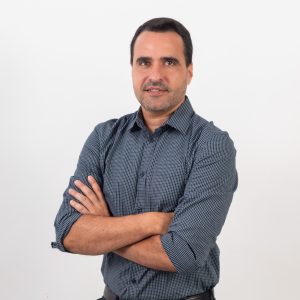Ouro Fino is increasing process efficiency, data security and data governance across its two separate agricultural pesticides and animal health products companies with future-ready ERP in the cloud from SAP.

On a mission to reimagine Brazilian agriculture, Ouro Fino Quimica S.A. develops solutions, services and technologies adapted for the country’s main agricultural crops. Its sister company Ouro Fino Saúde Animal Participações S.A. is challenging conventional thinking on animal health and aims to lead the evolution and sustainable growth of the animal health ecosystem.
Both Ouro Fino companies were using the same ERP application, which caused mounting challenges related to system governance and compliance with Brazil’s data privacy and protection law. To better serve the needs of the two businesses, Ouro Fino Quimica made the decision to invest in a new technology foundation in the cloud.
Modernizing an operating environment for two separate companies using RISE with SAP S/4HANA Cloud, Private Edition
Before: Challenges and opportunities
• Complexity of legacy system governance, with two Ouro Fino companies using the same instance of the SAP ERP application.
• Limited ability to enhance process efficiency and agility.
• Strategic imperative to adopt advancements in system security and data cryptography practices, and ease compliance with data privacy and protection regulations.
• Potential offered by the cloud for innovation, automation and mobility.
Why SAP?
• Significant references and benchmarking of SAP solutions in the agribusiness industry.
• Proven reliability and robust next-generation functionality offered by RISE with SAP S/4HANA Cloud, private edition and SAP Business Technology Platform (SAP BTP).
• Faster process transformation using a brownfield migration approach, minimizing business disruption.
After: Value-driven results
• Increased process efficiency, agility and data security.
• Reduced the overtime required for accounting close by 50%.
• Minimized batch processing time, down from between eight and nine hours to between 40 and 50 minutes.
• Decreased the time needed for monthly report extraction, down from 36 hours to four hours.
• Improved IT security and data governance.
• Scaled back the estimated effort for outsourced industrialization by 10 times using SAP BTP instead of the SAP ERP application.
Gaining the flexibility and scalability for future-ready operations and sustainable growth
Active for more than a decade in the development of pesticides, Ouro Fino Quimica S.A. produces fertilizers, herbicides and fungicides for the Brazilian market’s main agricultural crops, including sugarcane, soybean, corn and cotton. Its sister company Ouro Fino Saúde Animal Participações S.A. is a leader in animal health, offering medicines, vaccines and other products for ruminants, poultry, pigs and horses, as well as pets.
Applying a brownfield approach, the two Ouro Fino companies took advantage of RISE with SAP S/4HANA Cloud, private edition, with each company using a separate instance of the cloud ERP. This approach allowed the companies to migrate to the new environment without losing critical historical data.
The new architecture gives both businesses greater autonomy and system governance, helping them comply with Brazil’s data privacy and protection law. The new setup also provides the flexibility and scalability to serve future needs while also reducing server maintenance costs and easing the introduction of innovative technologies.
The companies are also making use of SAP BTP for the Cloud Foundry environment in microservice development, using modern programming languages such as Python and Node.js for posting data in APIs.
“Thanks to RISE with SAP S/4HANA Cloud, private edition, our two Ouro Fino companies are now operating separately on a future-ready technology foundation with all historical data from our legacy environment in place,” said Bruno Maniglia, CIO, Ouro Fino Quimica S.A. and Ouro Saúde Animal Participações S.A.
“We successfully completed the move to RISE with SAP S/4HANA Cloud, private edition and separated the systems of the two companies in just eight months. And all without disrupting business operations.”
What was the driving factor that led your company to migrate from your legacy ERP system to SAP?
In reality, we had a set of factors for migration. Among them we can highlight:
- Servers where we had SAP ECC installed were obsolete.
- Security flaws and lack of data encryption.
- End of SAP ECC support scheduled for 2026.
- Complexity to integrate with new technologies such as AI, RPA and other development languages.
- Separation of the ERPs of Ourofino Saúde Animal and Ourofino Química.
You mentioned that the migration was completed in just eight months without disrupting business operations. Can you elaborate on the planning and implementation process that enabled this smooth transition?
The eight months of projects were basically divided into three stages, with four months of preparing the infrastructure environment, considering all the necessary prerequisites, both for SAP S/4HANA and for all modules and legacy systems integrated with it. This was the moment of greatest complexity in the project as many topics that were not initially mapped emerged and we had to act in a timely manner so as not to miss the project deadlines.
Once this first stage was completed, with the environment ready, we began testing with users. It was an intense two months, with key users from both companies carrying out the most varied functional tests.
At this stage we saw that the effort and dedication of everyone, especially the partners, in the previous phase of building the environment left us in a safe situation, that is, we were ‘winning the game’.
With the tests of both companies completed, we moved on to the third and final stage, where we carried out three migration simulations, both to have the process well aligned between the teams, and to measure the necessary downtime for the migration process.
At the end of these steps, we were sure of what needed to be done so as not to have an impact on the business after the change in the environment.
With the transition to a new ERP system, you achieved a reduction in overtime. How did these operational efficiencies impact your overall business objectives?
With the adoption of SAP S/4HANA within the SAP cloud, we immediately felt an improvement in the system’s performance, especially in data generation processes that sometimes took hours and now run in minutes.
This brought efficiency to administrative areas, speeding up the monthly closing processes. Another point on which we are already ‘harvesting’ is the possibility of developing new functionalities in more modern programming languages, as a result of which the average project effort has been shown to be up to three times lower compared to ABAP developments in SAP ECC.
Can you shed light on how the new ERP system is helping both companies comply with Brazil’s data privacy and protection law? Have you seen any measurable improvements in data governance?
With SAP S/4HANA we now have a more protected environment from possible intrusions, and also encrypted, meaning that in the event of a hacker attack, the data accessed cannot be read by the attacker. Furthermore, with the new registration model, where everyone involved is treated as business partners, we have improved our registration process for customers, suppliers, employees, etc.
Now that each company operates on its own separate instance of the cloud ERP, how has this autonomy impacted the system governance and day-to-day operations for both companies?
Before the separation, we had a lot of difficulty in governing the processes, which, because they were different between the companies, had to work in the same system. This left some configurations complex, costly, and support in case of problems was slow. With the separation, each company has its freedom with its respective configurations, integrations, registrations and processes. Focusing your own SAP on your specific business, without worrying about harming another company.
Moving forward, what are your plans for scaling the new ERP system to support the companies’ future needs and introduce innovative technologies, especially considering your use of modern programming languages and APIs?
We started three work fronts in each of the companies. The first is responsible for evaluating what we are using from third-party systems that could be in SAP, such as IBM Cognos, which we use for financial planning. This front aims to identify, evaluate and, if it makes sense, drive the adoption of SAP for the process.
Another front is driving necessary improvements to the business using SAP BTP, always seeking development without coding or, if necessary, the use of more modern languages, both to reduce effort and to avoid customization within SAP itself.
And finally, we are evaluating the customizations we already have within SAP, coming from the previous version, to step by step redo what makes sense in the BTP bed, with the objective of having a ‘clean’ SAP core of customizations by 2026, so we can update the version transparently.
Click below to share this article

